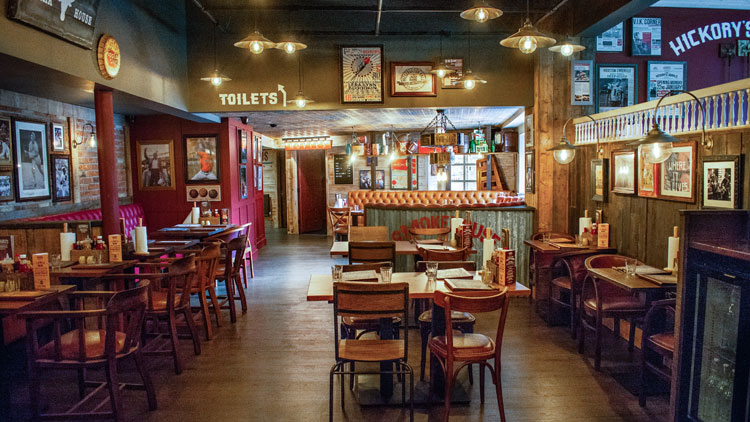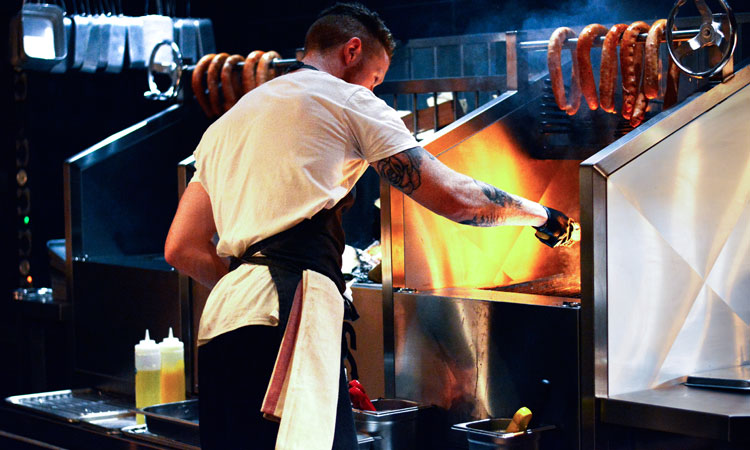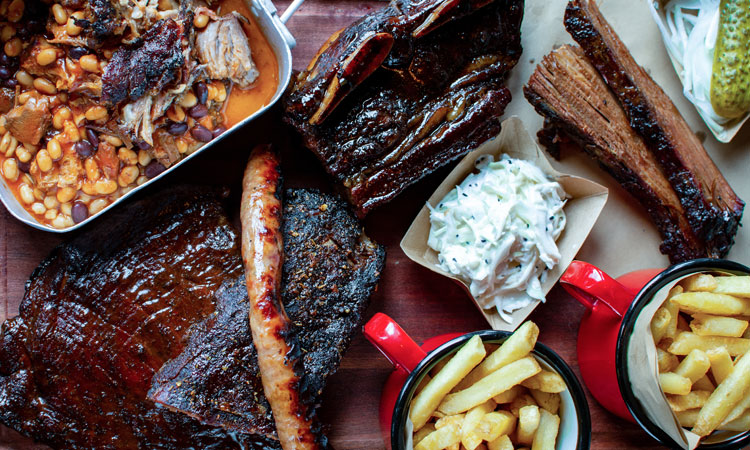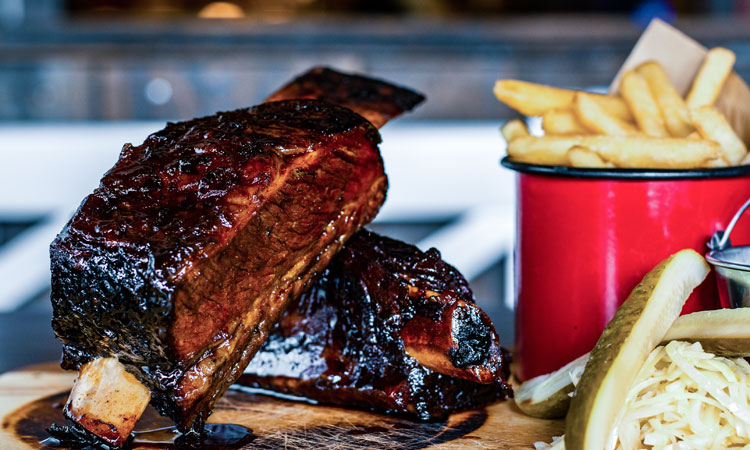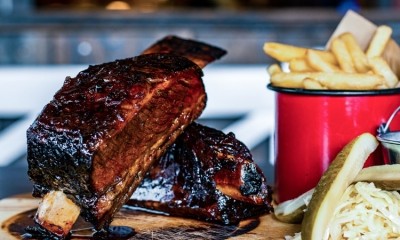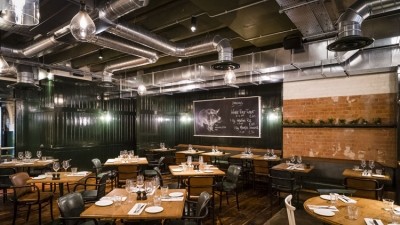Southern comfort: how Hickory's expansion tactics are paying dividends
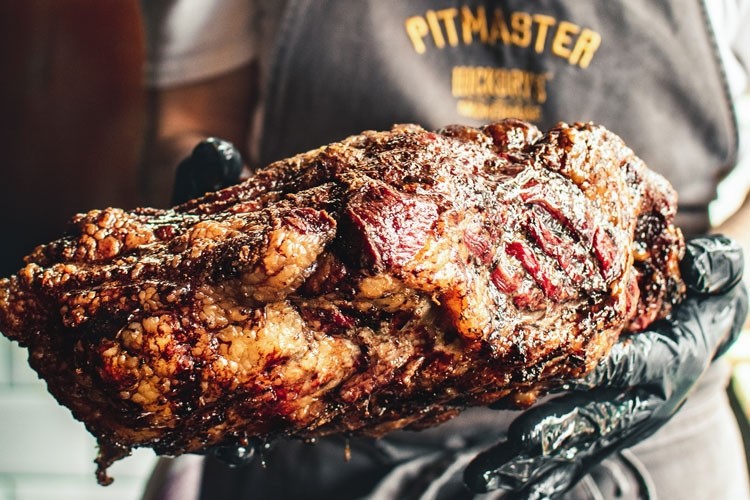
The plan was only ever to do one,” says John Welsh, managing director of US barbecue brand Hickory’s. However, the debut venue, in Chester, proved so popular that he soon got the barbecue bug, with Welsh now presiding over a company of 10 restaurants and with backing from private equity company Piper. What’s more, after almost a decade in business, he’s decided that now is the time to light a fire under his expansion plans and pick up the pace.
As such, the barbecue and smokehouse concept has just opened its 10th site – the former Vernon Arms pub in Poynton, south Manchester, and is about to sign on another site nearby. A third new location is being lined up in Staffordshire, with a target opening of next May. The company had previously secured a plot of land in Telford, but a change of decision by the council saw it given over to a major supermarket chain, “that has done nothing with it for two years”, says Welsh in frustration.
Bringing back the love
Hickory’s expansion strategy so far has been simple: to take on “unloved, underinvested-in boozers that have a heritage,” according to Welsh. This has so far been working well, he says, adding that the business seems to thrive in areas no one else wants to be in. The majority of the venues it has acquired have either ceased trading or been on the verge of it. The rents are much lower than on the high street and because the sites are often in a bad state, Hickory’s can do a lot with them.
“We generally gain the support of the local community really quickly as they want to see their local back up and running,” he says. “We never wanted to sit on the high street, for us the most important thing is to be embedded in a community.”
Hickory’s has been proactive in how it does this. At its Gresty Green site in Crewe new housing developments are being built within striking distance of the restaurant, so the general manager took it upon himself to visit the sales and marketing suite with 90 welcome packs to be distributed to the new owners, including BBQ sauce, a jar of coffee, and, of course, a menu.
However, finding the right sites has not been plain sailing, which is why the company is now looking to new-builds to add another string to its bow. Its Staffordshire restaurant is due to be its first new-build location, something which Welsh says he has been keen to try for several years.
The internal design is largely set, he says, with restaurants combining a stripped-back smokehouse aesthetic with more plush bars areas, but the new-build template will see restaurants slightly raised up off the ground, in keeping with its southern US inspiration, and with a stretching veranda. The company also wants to push the focus on family space, with a children’s play area and bigger garden than normal – perhaps with a nature trail running through it – as well as including features such as fire pits and a cinema inside.
A well-travelled concept
Having a good relationship with the locals has been important for Hickory’s success, but the company has also achieved its goal of being seen as a destination restaurant, with the average drive time to one of its sites around 25 minutes. Welsh believes the key driver of this is the food. Hickory’s was born following founder Neil McDonnell’s travels through the US where he discovered American barbecue. McDonnell had two other businesses at the time: Bar Lounge, an over-21s cocktail bar; and upmarket steakhouse Upstairs at the Grill, but was looking for something different to add to the mix. “We knew we were missing something from a family perspective,” says Welsh.
At the time he admits none of the team really had a clue what American barbecue was all about, but a few research trips later and they were sold on the idea. “When we first opened Hickory’s Chester, people probably didn’t understand the concept, but television programmes like Man vs Food and Diners, Drive-Ins and Dives has meant people are a lot more educated than they were 10 years ago. I think we really got the timing right.”
The menu has traditionally had a lot of influence from Texas; Welsh says they found Austin to be a great base in terms of research trips as there were lots of great barbecue restaurants in the area, with a focus on beef and brisket. However, it has also touched down in Memphis to look specifically at ribs, discovered Korean-inspired barbecue food in Brooklyn, and recently took a group to Georgia and the Carolinas to sample the dishes of those regions, which included a big focus on seafood.
Hickory’s organises an annual trip to the US to keep up to date with the latest developments, and Welsh says that for its area managers, GMs and chefs, those trips to experience not just the southern food and to meet with pit masters, but the hospitality, form a key part of their development. “For us, the pit masters in each of the venues are key, so the training of those guys has to be bang on.”
Its menu is refreshed every six months, with the latest iteration heeding customer requests for a greater selection of vegetarian and vegan options, which it has met with dishes such as a jackfruit chilli. “While we are an American smokehouse, it’s important there are options for everyone,” he says.
Hickory’s has also looked at adding some lighter options to the menu but, somewhat unsurprisingly, its biggest sellers remains its smokehouse platter – a selection of all the different pit items, beef brisket and, frustratingly for Welsh as he wants the focus to be on the barbecued items, the burgers. “In the last menu change we put on a ‘bird and beast’ burger, made with chicken breast and a beef patty. I was sceptical, but it’s one of our biggest sellers.”
Southern hospitality
Hickory’s typical customers are families with young or older children, as well as couples, but it tries to cater from everyone – from “no teeth to false teeth”, as Welsh puts it. The company has also tried to take as much of the service style from the US as possible to give a more authentic restaurant experience.
“The skill is to try to do it in that really natural American way, so it’s not forced. It’s an area where we see ourselves as different when we compare ourselves to other brands – and I think it’s one we stand out in.”
Hickory’s also invests in training and development and is soon to launch a conceptual ‘academy’, where everything from functional training and personal development to employees’ career journeys and its rising star programme – where two employees are peer-nominated at each site to receive enhanced training – are housed under one umbrella.
It also has a mentor programme, whereby each GM is mentored by one of the directors. It even carries out an annual roadshow where three or four people from the senior team travel round all the venues and speak to every staff member for 15 minutes each.
“You end up speaking to about 30 people a day, but what you find out is absolutely priceless in terms of thinking about our direction and focus for the next 12 months,” he says.
For Welsh, it’s about keeping that connection with its teams as the company grows. He acknowledges that now Hickory’s is up to 800 staff, filtering the right messages down to everyone has got harder, so he is keen to explore different ways to keep everyone informed and engaged. He has also learned that with scale an increasing amount of control needs to be passed down to the GMs, which Welsh says has been a big change in mindset but has worked well over the past year.
Recruitment has never really been an issue for the business, it insists; the majority of its staff are British, so the fallout from Brexit hasn’t been an issue. Retention, on the other hand, is something it’s working hard to improve, and Welsh believes that offering structured training and the opportunity for progression has had a hugely beneficial effect on retention.
“A lot of people have worked with us for a number of years. If they are ambitious we need to make sure we are constantly giving them a glimpse of progress,” he says.
Work-life balance is also something that comes up a lot on surveys it runs and at the roadshows, he explains, so the business is working to put a cap on working more than a set number of hours a week. “In my day, working 65–70 hours was just the norm, but times have changed and you have to get on board with it. The outcome will be better for us all – a more motivated team, greater retention and better standards.”
Strengthening the brand
Back in October 2014 the business was given a significant fillip in the form of a £6m investment from Piper, which gave it some fire power to expand. But growth since then has been conservative, with Welsh at pains to ensure the company structure is right before it looks to ramp up expansion.
One way it intends to do this is to make better use of guest feedback (“by looking after people, we know we will grow our profits”). Hickory’s recently signed up with restaurant intelligence company Yumpingo so that it can get specific feedback from customers when they dine, which he says has made a big difference to how it approaches its menu development.
It now also closely tracks its Net Promoter Score (NPS) to gauge the loyalty of its customer relationships. “Other than looking at any complaints that came through or talking to guests in the restaurants, we had no real objective measure of how we were performing,” Welsh explains. Now there is even a competition between venues to get the best NPS score. “It’s been really enlightening for us – we might think something works, but the customer doesn’t always agree.”
Piper’s pressure has been in the form of getting the brand right and making sure it has a solid foundation to work from, rather than pushing out to every town in the UK. Hickory’s is on track with its plan with Piper, but when the time comes for an exit Welsh believes the business could be taken on by another private equity group or could even appeal to large brewers and pub operators that have suitable sites to offer.
“We are happy with our rate of around three openings a year, but we could start moving it to four. We have always been very considered in our growth – some people might say we have been slow, but I’d like to think we get it right each time, which means more to us than growing quickly.” In terms of how far Hickory’s could go one day, Welsh says there is no reason why it couldn’t get to 100.
For the time being, he believes the business would be foolish not to try to fill in the gaps between the north-west and the Midlands. It used to have a rule that it wouldn’t open a restaurant more than two hours’ drive from its base in Chester, but that has since been ditched. “South Manchester is an area we’ve been looking to open in for a while, and we’d love to go further down past Worcester in areas like Cheltenham, as some of the suburbs there hold opportunities.”
Hickory’s may well be coming soon to an old boozer near you.
A version of this article first appeared in Restaurant’s sister website MCA and subsequently in the September issue of Restaurant magazine, the leading title for the UK's restaurant industry. For more features, comment, interviews and in-depth analysis of the restaurant sector subscribe to Restaurant magazine here. To subscribe to MCA, click here.
